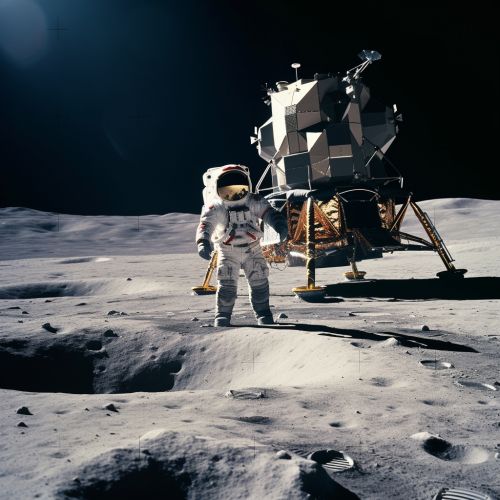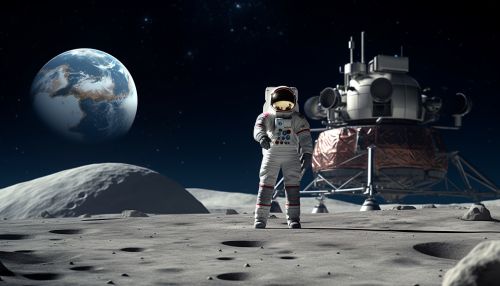Moon landing
Introduction
The Moon landing refers to the event of a spacecraft, specifically from Earth, landing on the surface of the moon. This feat was first achieved by the Apollo 11 mission, launched by the NASA, the United States' space agency, on July 20, 1969. The Apollo 11 mission marked a significant milestone in the history of space exploration and has been a subject of extensive scientific study and public interest.


History
The concept of a manned moon landing began to take shape during the space race between the United States and the Soviet Union during the Cold War. The Soviet Union had initially taken the lead in space exploration with the launch of the first artificial satellite, Sputnik 1, in 1957, and the first human in space, Yuri Gagarin, in 1961. In response, the United States accelerated its own space program, culminating in President John F. Kennedy's ambitious declaration in 1961 that the nation would land a man on the moon and return him safely to Earth before the end of the decade.
Apollo Program
The Apollo program was the United States' third human spaceflight program carried out by NASA, which accomplished landing the first humans on the Moon from 1969 to 1972. The program was named after Apollo, the Greek god of light, music, and the sun, by NASA manager Abe Silverstein, who later said that "I was naming the spacecraft like I'd name my baby."
Apollo 11 Mission
The Apollo 11 mission was the first manned mission to land on the moon. The crew, consisting of astronauts Neil Armstrong, Buzz Aldrin, and Michael Collins, launched from the Kennedy Space Center on July 16, 1969. After a journey of approximately four days, the lunar module, known as "Eagle," separated from the command module and began its descent to the lunar surface.
Lunar Module
The lunar module, or LM, was a two-stage vehicle designed for space operations near and on the moon. The vehicle was also known as the Lunar Excursion Module and was abbreviated LEM. Despite the abbreviation, it was always pronounced as individual letters, not as a word. The lunar module was designed to carry a crew of two from lunar orbit to the surface of the moon and back.
Moon Landing
On July 20, 1969, the lunar module landed in the Sea of Tranquility, a relatively flat and smooth area selected for its accessibility. Neil Armstrong became the first human to step onto the lunar surface, followed by Buzz Aldrin. The astronauts spent about two and a half hours outside the spacecraft, collecting lunar samples and conducting experiments. The entire event was broadcast live to a global audience on television.
Return to Earth
After their moonwalk, Armstrong and Aldrin returned to the lunar module and launched back into lunar orbit to rejoin Michael Collins in the command module. The crew then returned to Earth, splashing down in the Pacific Ocean on July 24, 1969. The successful mission fulfilled President Kennedy's goal and marked the end of the space race, with the United States emerging as the victor.
Impact and Legacy
The moon landing had a profound impact on popular culture and the imagination of the public, symbolizing the realization of a centuries-old dream and marking a victory for human achievement. It also had significant implications for scientific research, particularly in the fields of astronomy and geology. The lunar samples brought back by the Apollo missions have provided invaluable data about the moon's composition and geological history.
Controversies
Despite the overwhelming evidence and consensus among scientists, a small number of moon landing conspiracy theorists continue to claim that the moon landings were hoaxes staged by NASA and the United States government. These claims are based on misinterpretations of photos and videos, and misunderstandings about space science.
